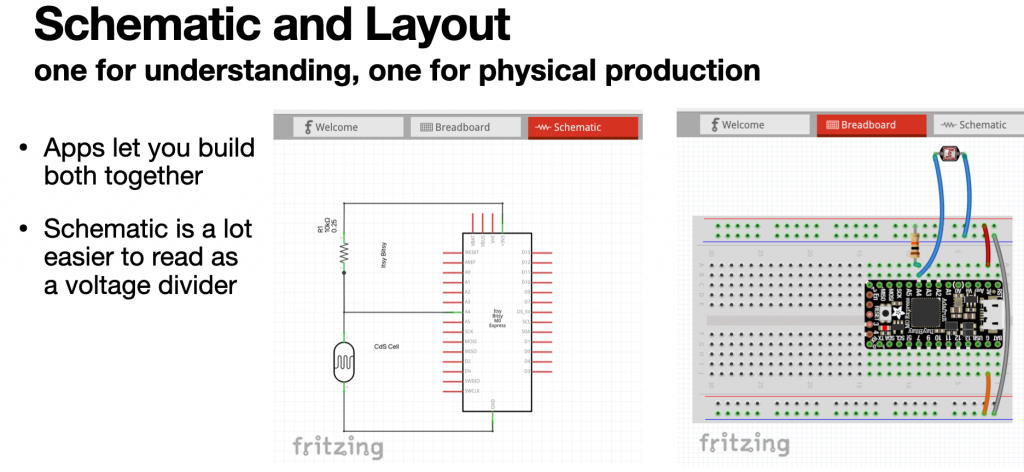17 Design and Lay Out Your Circuits
Electric circuits can be documented in multiple different ways for different purposes. The usual design process takes you from concepts for performance of individual components in your product, through a schematic representation that concentrates on showing how they connect and work together electrically, to a component layout that focusses on how they all fit together physically.
Schematic Diagrams are organized to show the flow of current and signals through your circuit, and promote understanding. Usually you will organize your schematic so that signals flow from left to right across the page and current flows from positive at the top of the page down to negative at the bottom of the page. Schematics exist to aid in human understanding of your circuits, so they should be organized to make that understanding as easy as possible. Schematics use symbols for common electrical components that you will come to recognize as needed.
While it is sometimes possible to arrange Circuit Layouts to match the geometry of your schematic, that is often inefficient in space, or frustrated by physical details of the components. The twists and turns of physical layouts still make all the same electrical connections shown in the schematic, but make for difficult reading if you are trying to understand the functioning. Using apps like fritzing, you can create schematics and layout diagrams simultaneously, although it’s usually easier to stick with pencil and paper until things get complicated.

It is critical that you be able to follow both schematics and layout diagrams to realize your designs, as detailed in this video (9:23) for a simple photocell circuit.
As circuits become more complex, it becomes even more difficult to follow signals through a layout, as illustrated by this example for a cantilever beam load cell feeding a signal to an instrumentation amplifier and finally into the analog input of a microcontroller. (video 9:54)
Media Attributions
- Schematic and Layout © Rick Sellens is licensed under a CC BY (Attribution) license

